 W
WThe First Dynasty of ancient Egypt covers the first series of Egyptian kings to rule over a unified Egypt. It immediately follows the unification of Upper and Lower Egypt, possibly by Narmer, and marks the beginning of the Early Dynastic Period, a time at which power was centered at Thinis.
 W
WThe Second Dynasty of ancient Egypt is the latter of the two dynasties of the Egyptian Archaic Period, when the seat of government was centred at Thinis. It is most known for its last ruler, Khasekhemwy, but is otherwise one of the most obscure periods in Egyptian history.
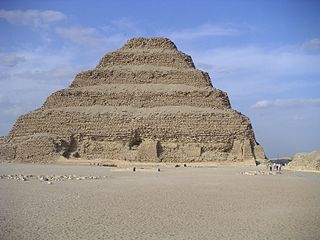 W
WThe Third Dynasty of ancient Egypt is the first dynasty of the Old Kingdom. Other dynasties of the Old Kingdom include the Fourth, Fifth and Sixth. The capital during the period of the Old Kingdom was at Memphis.
 W
WThe Fourth Dynasty of ancient Egypt is characterized as a "golden age" of the Old Kingdom of Egypt. Dynasty IV lasted from c. 2613 to 2494 BC. It was a time of peace and prosperity as well as one during which trade with other countries is documented.
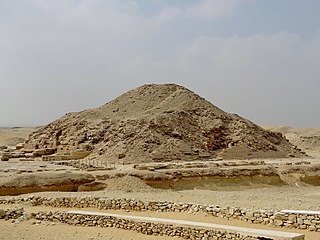 W
WThe Fifth Dynasty of ancient Egypt is often combined with Dynasties III, IV and VI under the group title the Old Kingdom. The Fifth Dynasty pharaohs reigned for approximately 150 years, from the early 25th century BC until the mid 24th century BC.
 W
WThe Sixth Dynasty of ancient Egypt along with the Third, Fourth and Fifth Dynasty constitutes the Old Kingdom of Dynastic Egypt.
 W
WThe Ninth Dynasty of ancient Egypt is often combined with the 7th, 8th, 10th and early 11th Dynasties under the group title First Intermediate Period. The dynasty that seems to have supplanted the 8th Dynasty is extremely obscure. The takeover by the rulers of Herakleopolis was violent and is reflected in Manetho's description of Achthoes, the founder of the dynasty, as 'more terrible than his predecessors', who 'wrought evil things for those in all Egypt".
 W
WThe Tenth Dynasty of ancient Egypt is often combined with the 7th, 8th, 9th and early 11th Dynasties under the group title First Intermediate Period.
 W
WThe Eleventh Dynasty of ancient Egypt is a well-attested group of rulers. Its earlier members before Pharaoh Mentuhotep II are grouped with the four preceding dynasties to form the First Intermediate Period, whereas the later members are considered part of the Middle Kingdom. They all ruled from Thebes in Upper Egypt.
 W
WThe Twelfth Dynasty of ancient Egypt is considered to be the apex of the Middle Kingdom by Egyptologists. It often is combined with the Eleventh, Thirteenth, and Fourteenth dynasties under the group title, Middle Kingdom.
 W
WThe Thirteenth Dynasty of ancient Egypt is often combined with Dynasties XI, XII and XIV under the group title Middle Kingdom. Some writers separate it from these dynasties and join it to Dynasties XIV through XVII as part of the Second Intermediate Period. Dynasty XIII lasted from approximately 1803 BC until approximately 1649 BC, i.e. for 154 years.
 W
WThe Fourteenth Dynasty of Egypt was a series of rulers reigning during the Second Intermediate Period over the Nile Delta region of Egypt. It lasted between 75 and 155 years, depending on the scholar. The capital of the dynasty was probably Avaris. The 14th Dynasty existed concurrently with the 13th Dynasty based in Memphis. The rulers of the 14th Dynasty are commonly identified by Egyptologists as being of Canaanite (Semitic) descent, owing to the distinct origins of the names of some of their kings and princes, like Ipqu, Yakbim, Qareh, or Yaqub-Har. Names in relation with Nubia are also recorded in two cases, king Nehesy and queen Tati.
 W
WThe Fifteenth Dynasty was a foreign dynasty of ancient Egypt. It was founded by Salitis, a Hyksos from West Asia whose people had invaded the country and conquered Lower Egypt. The 15th, 16th, and 17th Dynasties of ancient Egypt are often combined under the group title, Second Intermediate Period. The 15th Dynasty dates approximately from 1650 to 1550 BC.
 W
WThe Sixteenth Dynasty of ancient Egypt was a dynasty of pharaohs that ruled the Theban region in Upper Egypt for 70 years.
 W
WThe Seventeenth Dynasty of Egypt is classified as the third dynasty of the Second Intermediate Period of Egypt. The 17th Dynasty dates approximately from 1580 to 1550 BC. Its mainly Theban rulers are contemporary with the Hyksos of the Fifteenth Dynasty and succeed the Sixteenth Dynasty, which was also based in Thebes.
 W
WThe Eighteenth Dynasty of Egypt is classified as the first dynasty of the New Kingdom of Egypt, the era in which ancient Egypt achieved the peak of its power. The Eighteenth Dynasty spanned the period from 1550/1549 to 1292 BC. This dynasty is also known as the Thutmosid Dynasty for the four pharaohs named Thutmose.
 W
WThe Nineteenth Dynasty of Egypt, also known as the Ramessid dynasty, is classified as the second Dynasty of the Ancient Egyptian New Kingdom period, lasting from 1292 BC to 1189 BC. The 19th Dynasty and the 20th Dynasty furthermore together constitute an era known as the Ramesside period. This Dynasty was founded by Vizier Ramesses I, whom Pharaoh Horemheb chose as his successor to the throne.
 W
WThe Twentieth Dynasty of Egypt is the third and last dynasty of the Ancient Egyptian New Kingdom period, lasting from 1189 BC to 1077 BC. The 19th and 20th Dynasties furthermore together constitute an era known as the Ramesside period.
 W
WThe Twenty-first Dynasty of Egypt is usually classified as the first Dynasty of the Ancient Egyptian Third Intermediate Period, lasting from 1069 BC to 945 BC.
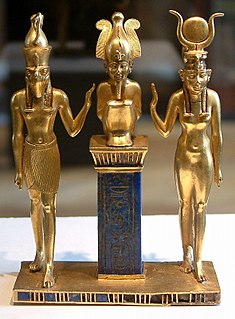 W
WThe Twenty-second Dynasty of Egypt is also known as the Bubastite Dynasty, since the pharaohs originally ruled from the city of Bubastis. It was founded by Shoshenq I.
 W
WThe Twenty-third Dynasty of Egypt is usually classified as the third dynasty of the ancient Egyptian Third Intermediate Period. This dynasty consisted of a number of Meshwesh ancient Libyan (Berber) kings, who ruled either as pharaohs or independent kings of parts of Upper Egypt from 880 BC to 720 BC, and pharaohs from 837 BC to 728 BC.
 W
WThe Twenty-fourth Dynasty of Egypt is usually classified as the fourth Dynasty of the Ancient Egyptian Third Intermediate Period.
 W
WThe Twenty-fifth Dynasty of Egypt, also known as the Nubian Dynasty, the Kushite Empire and the Black Pharaohs, was the last dynasty of the Third Intermediate Period of Egypt that occurred after the Nubian invasion.
 W
WThe Twenty-sixth Dynasty of Egypt dynasty was the last native dynasty to rule Egypt before the Persian conquest in 525 BC. The dynasty's reign is also called the Saite Period after the city of Sais, where its pharaohs had their capital, and marks the beginning of the Late Period of ancient Egypt.
 W
WThe Twenty-seventh Dynasty of Egypt, also known as the First Egyptian Satrapy, was effectively a province (satrapy) of the Achaemenid Persian Empire between 525 BC and 404 BC. It was founded by Cambyses II, the King of Persia, after the Battle of Pelusium and the Achaemenid conquest of Egypt, and his subsequent crowning as Pharaoh of Egypt. It was disestablished upon the rebellion and crowning of Amyrtaeus as Pharaoh. A second period of Achaemenid rule in Egypt occurred under the Thirty-first Dynasty of Egypt.
 W
WThe Twenty-ninth Dynasty of Egypt is usually classified as the fourth Dynasty of the Ancient Egyptian Late Period. It was founded after the overthrow of Amyrtaeus, the only Pharaoh of the 28th Dynasty, by Nefaarud I in 398 BC, and disestablished upon the overthrow of Nefaarud II in 380 BC.
 W
WThe Thirtieth Dynasty of Egypt is usually classified as the fifth Dynasty of the Late Period of ancient Egypt. It was founded after the overthrow of Nepherites II in 380 BC by Nectanebo I, and was disestablished upon the invasion of Egypt by the Achaemenid emperor Artaxerxes III in 343 BC. This is the final native dynasty of ancient Egypt; after the deposition of Nectanebo II, Egypt fell under foreign domination.
 W
WThe Thirty-first Dynasty of Egypt, also known as the Second Egyptian Satrapy, was effectively a satrapy of the Achaemenid Persian Empire between 343 BC to 332 BC. It was founded by Artaxerxes III, the King of Persia, after his reconquest of Egypt and subsequent crowning as Pharaoh of Egypt, and was disestablished upon the conquest of Egypt by Alexander the Great.
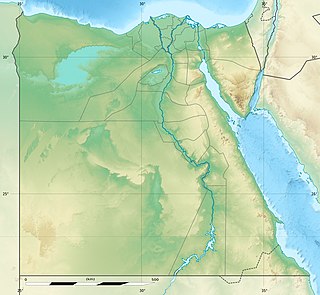 W
WThe Archaic or Early Dynastic Period of Egypt is the era immediately following the unification of Upper and Lower Egypt c. 3100 BC. It is generally taken to include the First and Second Dynasties, lasting from the end of the Naqada III archaeological period until about 2686 BC, or the beginning of the Old Kingdom. With the First Dynasty, the capital moved from Thinis to Memphis with a unified Egypt ruled by an Egyptian god-king. Abydos remained the major holy land in the south. The hallmarks of ancient Egyptian civilization, such as art, architecture and many aspects of religion, took shape during the Early Dynastic Period.
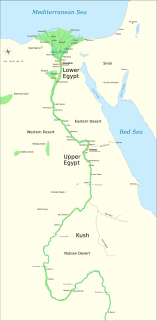 W
WThe First Intermediate Period, described as a 'dark period' in ancient Egyptian history, spanned approximately one hundred and twenty-five years, from c. 2181–2055 BC, after the end of the Old Kingdom. It comprises the Seventh, Eighth, Ninth, Tenth, and part of the Eleventh Dynasties. The concept of a "First Intermediate Period" was coined in 1926 by Egyptologists Georg Steindorff and Henri Frankfort.
 W
WThe history of Persian Egypt is divided into three eras:Achaemenid Egypt, referring to two periods of Achaemenid rule punctuated by an interval of independence: Twenty-seventh Dynasty of Egypt, also known as the First Egyptian Satrapy. Thirty-first Dynasty of Egypt, also known as the Second Egyptian Satrapy. Sasanian Egypt, referring to a period of occupation by the Sasanian Empire, after the Sasanian conquest of Egypt and shortly before the Muslim invasions
 W
WThe Ptolemaic dynasty, the Thirty-third dynasty of Egypt, sometimes referred to as the Lagid dynasty, was a Macedonian Greek royal dynasty which ruled the Ptolemaic Kingdom in Ancient Egypt during the Hellenistic period. Their rule lasted for 275 years, from 305 to 30 BC. The Ptolemaic was the last dynasty of ancient Egypt.
 W
WThe Roman pharaohs, rarely referred to as ancient Egypt's Thirty-fourth Dynasty, is the term sometimes used for the Roman emperors in their capacity as rulers of Egypt, especially in Egyptology. After Egypt was incorporated into the Roman Empire in 30 BC, the people and especially the priesthood of the country continued to recognize the Roman emperors as pharaohs, according them traditional pharaonic titularies and depicting them with traditional pharaonic garb, engaging in traditional pharaonic activities, in artwork and at temples throughout Egypt.
 W
WThe Second Intermediate Period marks a period when ancient Egypt fell into disarray for a second time, between the end of the Middle Kingdom and the start of the New Kingdom. The concept of a "Second Intermediate Period" was coined in 1942 by German Egyptologist Hanns Stock.
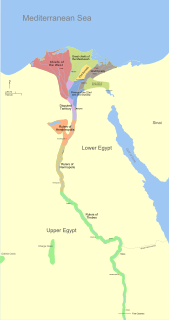 W
WThe Third Intermediate Period of ancient Egypt began with the death of Pharaoh Ramesses XI in 1070 BC, which ended the New Kingdom, and was eventually followed by the Late Period. Various points are offered as the beginning for the latter era, though it is most often regarded as dating from the foundation of the Twenty-Sixth Dynasty by Psamtik I in 664 BC, following the departure of the Nubian Kushite rulers of the Twenty-fifth Dynasty by the Assyrians under King Ashurbanipal. The concept of a "Third Intermediate Period" was coined in 1978 by British Egyptologist Kenneth Kitchen.